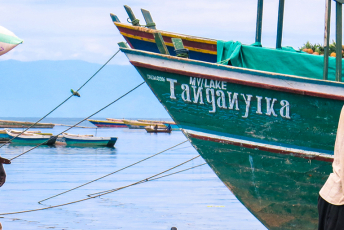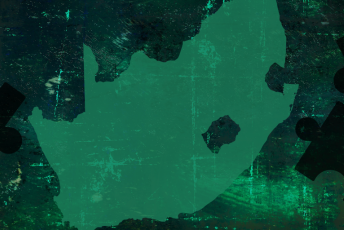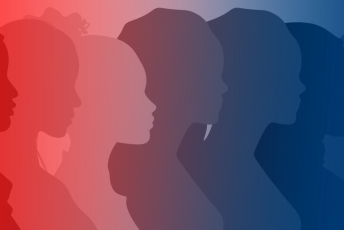People with albinism in Tanzania have a price on their heads – whether dead or alive, adults or children. Albino trafficking is underreported in Tanzania and other countries in East and Southern Africa, where markets for their body parts prosper.
Tanzania hosts the largest rate of people with albinism worldwide. Albinism is a genetic condition where skin lacks the melanin pigment, making a person appear unusually light. While one out of 15 000 people in most African sub-regions has albinism, one out of 1 400 Tanzanians has the condition. A mutation of the albino gene OCA2, which produces the melanin pigment responsible for tanning the skin, is carried (if not exhibited) by one in every 19 Tanzanians.
Albinos are socially alienated and stigmatised. They are often called derogatory terms like ‘ghosts’ and ‘white goats’, says Fundikila Wazambi of the Legal and Human Rights Centre in Tanzania. The stigmatisation means that they aren’t able to fully participate in socio-economic activities or access essential social services, and that their freedom of movement is limited. They are blamed for natural disasters like famine, drought or locust invasions by those who believe that albinos are cursed.
Ironically, people with albinism are valued for their body parts. According to superstition, their limbs, bones, skin and internal organs can be used to make charms, potions, amulets or concoctions that will bring good fortune, health, wealth and even extraordinary or supernatural powers like flying to those who use them.
A complete set of albino organs in Tanzania is priced at about US$75 000 by criminal networks serving wealthy clients. Children are said to be worth more – although ENACT could not determine exact figures. A living albino costs US$340 000, according to Vicky Ntetema, an undercover investigative journalist. These values make the illicit trade in albinos one of the most lucrative and harmful forms of human trafficking worldwide.
Chilling accounts of the inhumane practice of targeting and trafficking albinos were shared by Wazambi and Vicky Ntetema, also of the Legal and Human Rights Centre in Tanzania, and another informant who requested not to be named.
Albinos are targeted in four ways by criminal networks that include witch doctors, kidnappers, traffickers and killers: they can be kidnapped, trafficked from another village or country, killed and dismembered for body parts, or their graves may be exhumed and their organs removed.
It’s reported that a witch doctor indoctrinates a criminal gang for three weeks before they are released to carry out an attack. During this indoctrination period, the gang undergoes rituals, the target is shown to them, and they are instructed on how to carry out the attack and harvest the organs. After the attack, the gang presents the organs to the witch doctor to make the potions and charms.
The clients who buy these ‘products’ are wealthy, influential, and are from different parts of East and Southern Africa, including Tanzania and its immediate neighbours. It appears that most are politicians seeking re-election and business magnates who believe that potions made from albino body parts will make their enterprises thrive, says the anonymous informant.
When a wealthy client dies, albinos are sourced to serve him in his afterlife. In the most bizarre practice of this superstition, a dead client is buried with four live albinos – two on either side of the deceased body, which is laid on their laps.
Most attacks against people with albinism occur in the rural areas of Tanzania, especially in the Victoria, Tanganyika, Nyasa and other smaller lake regions. The towns of Kagera, Geita, Chato, Shinyanga, Singida and Mwanza are hotspots.
Unlike in urban centres, it is hard to detect when a person with albinism is killed in villages in rural areas. Communities believe that albinos ‘disappear’ and do not die, says Wazambi, and so do not report their missing relatives to the authorities.
There are three active albino trafficking routes in the East and Southern African regions, says Ntetema: Tanzania-Malawi-Burundi-Kenya; Tanzania-Mozambique-South Africa; and Tanzania-Swaziland-South Africa. Tanzania features in all these routes as a source country, but albinos are targeted in all these countries by the criminal networks who control the trade. The networks act independently but also work together to exchange organs and charms.
During his presidential election campaign in 2015, the late John Magufuli vowed to end the killing of albinos and pledged that government officers would be held personally responsible if any took place.
Despite Magufuli’s stance, killings continued, some are reported and many more are unreported. In 2021, four killings of albinos were reported by the human rights organisations Under the Same Sun and the Legal and Human Rights Centre. A boy of six was discovered mutilated in Kigoma city in May, while a woman was killed in Tabora municipality. And two graves exhumed in October in Tanga and Arusha cities revealed bodies that had been desecrated and were missing their left legs.
In other African countries, albino killings have reportedly increased with the COVID-19 pandemic as more people have fallen into poverty and turned to the organ trade to make money.
International advocacy campaigns by human rights organisations and the United Nations aim to raise awareness about the threats faced by albinos worldwide. These campaigns focus on influencing and instituting effective policy and protective frameworks at national levels.
But it is difficult to institute interventions for what can be described as a ‘silent crime’. Albino trafficking and killing occur in places where government services are often absent or ineffective. There is also less advocacy at these local levels due to traditions, customs and superstitions, leaving robust criminal networks to operate unfettered.
Political stances such as Magufuli’s are to be encouraged. Yet these remain political rhetoric if not accompanied by local-level advocacy. This advocacy, which may be spearheaded by the media and civil society, would need to focus on shifting the perspectives on albinism. This shift would decrease the stigmatisation and create counter-narratives that break down beliefs that enable the silent, deadly trade in people with albinism. Such campaigns are insufficient on their own, however – local-level leaders who vocally support these initiatives are needed to change mindsets, along with district and national-level support through law enforcement and policy frameworks.
The National Anti-Trafficking in Persons Plan of Action 2021-2024 launched in March is a commitment in the right direction. However, an additional and urgent focus is specific legislation on organ trafficking that will support its 2008 Anti-Trafficking in Persons Act in Tanzania.
And Tanzania is not alone, countries across the East and Southern African are necessary partners in the detection and prosecution of crimes in their own countries and in the cross-border trade in people with albinism.
Mohamed Daghar, Regional Coordinator, Eastern Africa, ENACT Project, ISS







